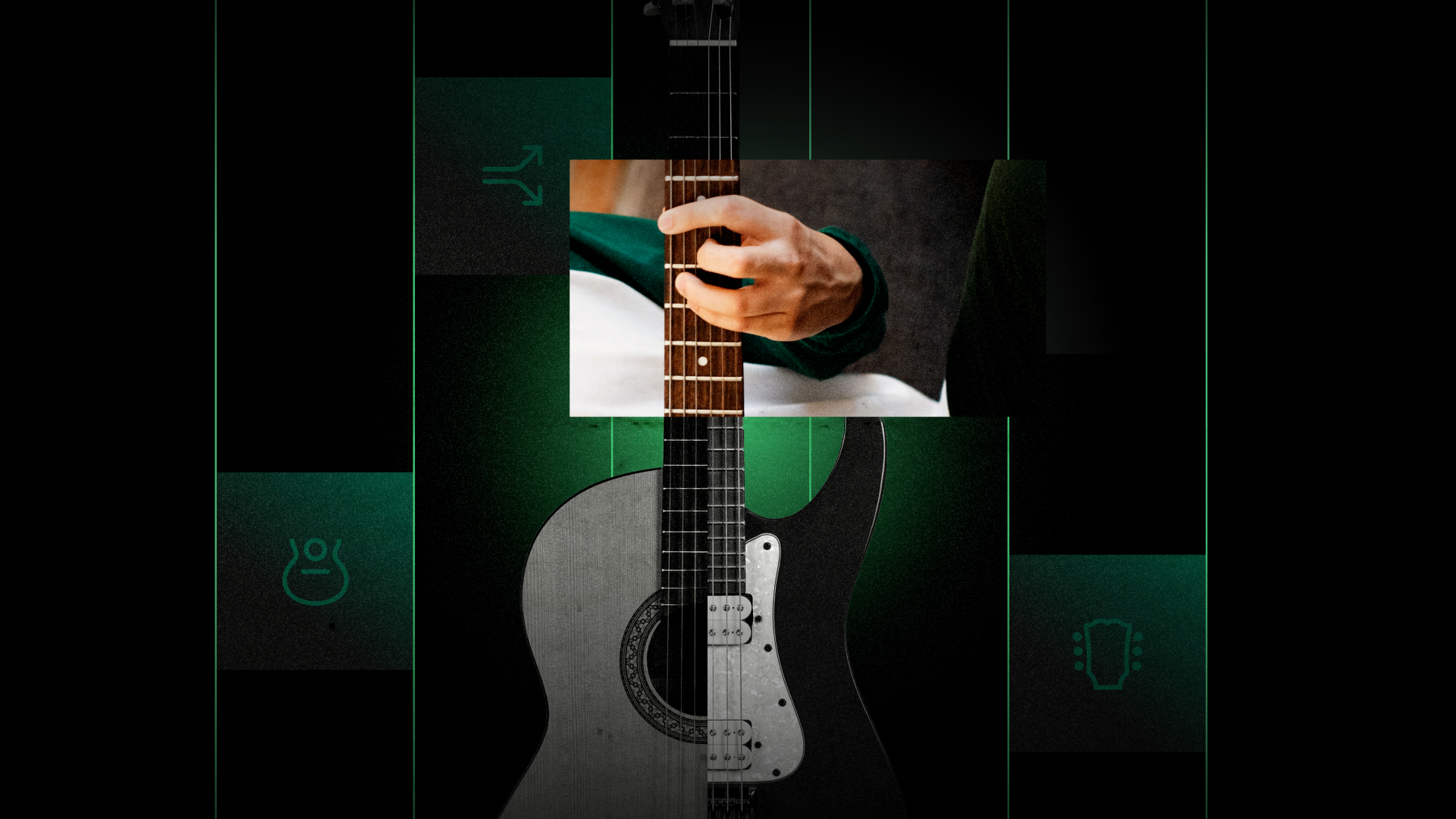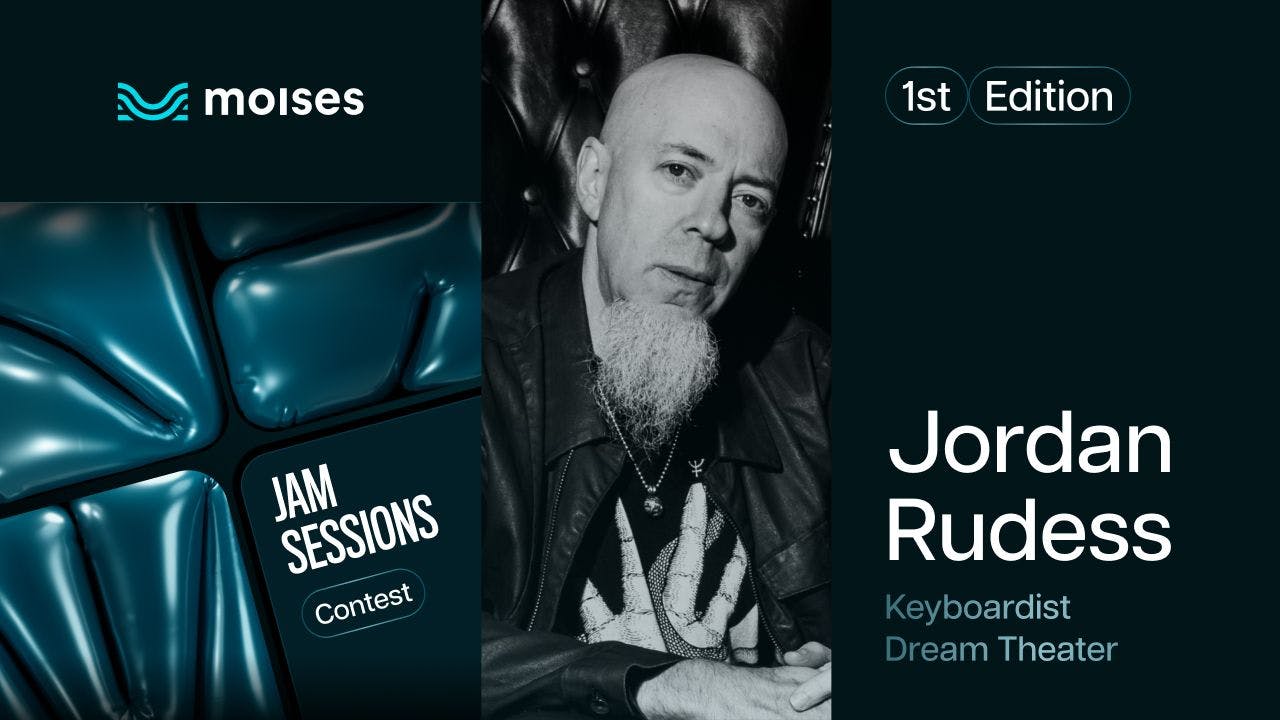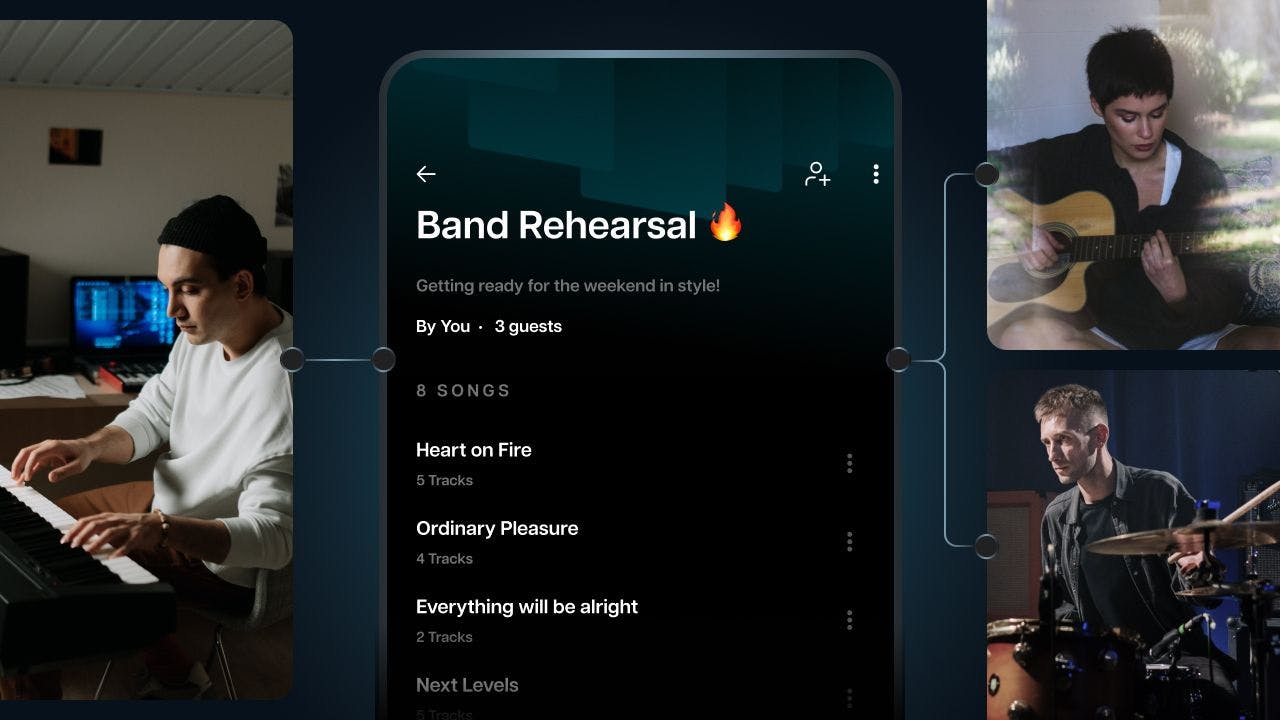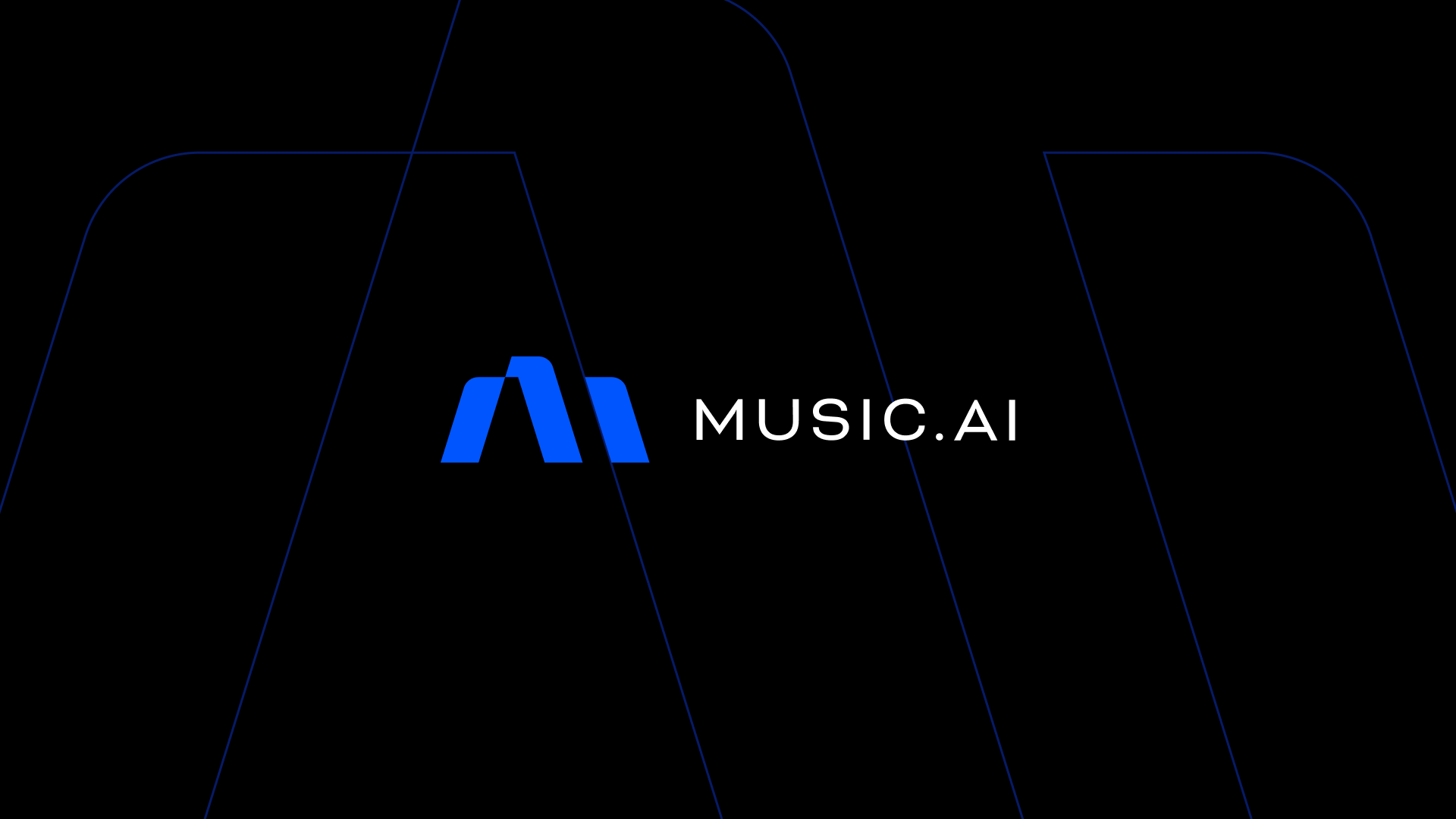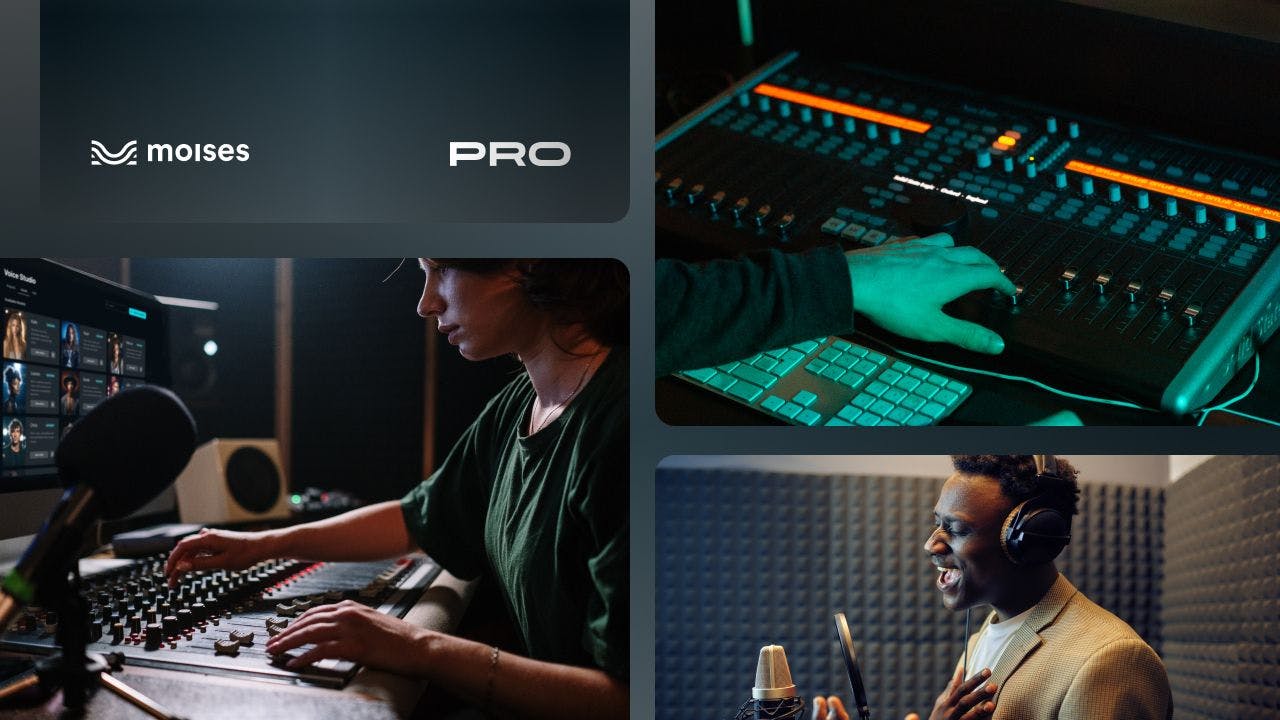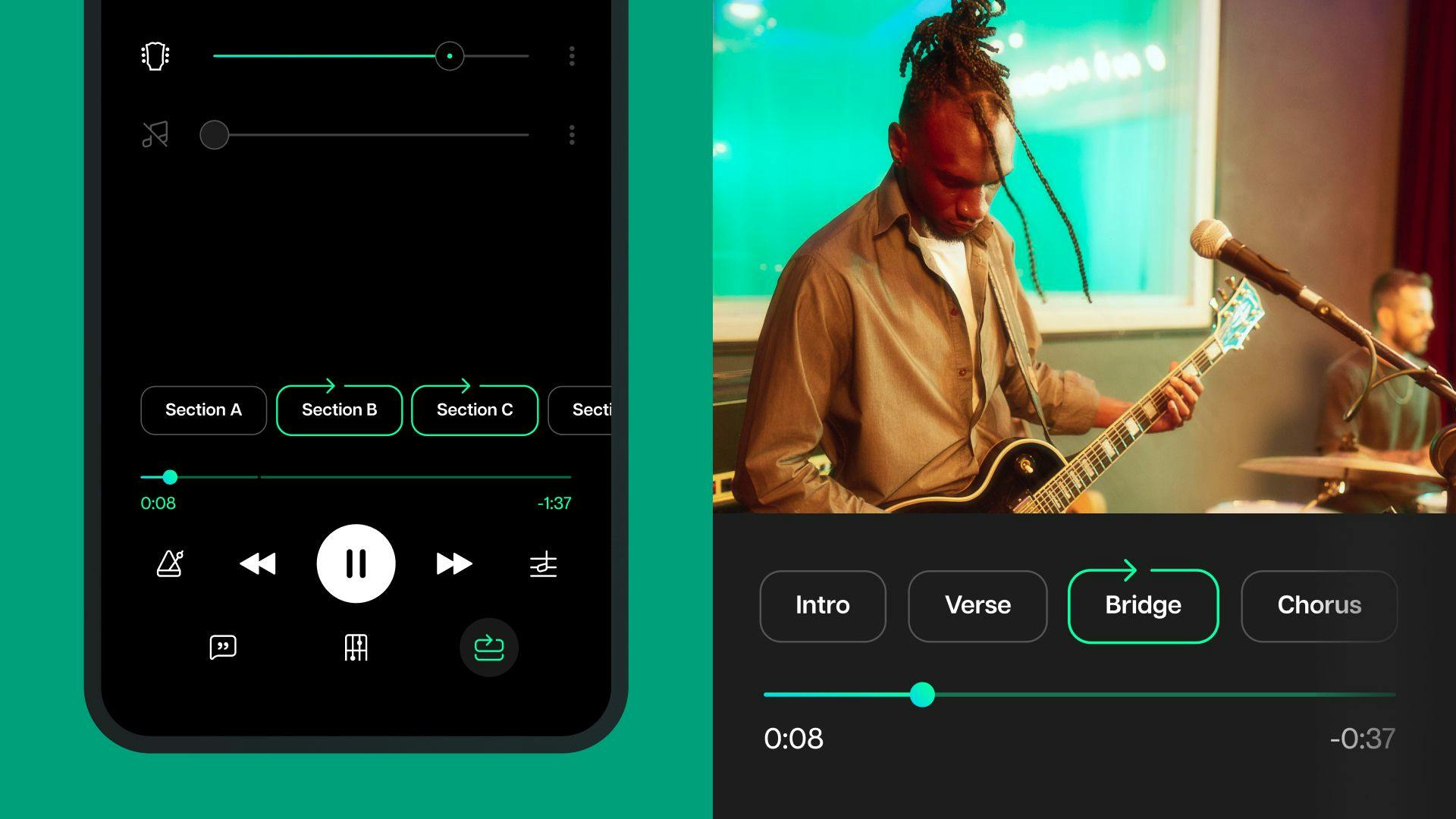Audio excellence is no longer out of reach for those who lack technical skills or resources. With an AI mastering tool as an option, the last step before music distribution becomes much more accessible.
Mastering used to depend entirely on an audio engineer's expertise and craft. Today, however, due to several breakthroughs in artificial intelligence and cloud computing, mastering has never been more accessible. An unprecedented number of artists, producers, and even audio engineers are taking advantage of its evolution.
While mastering engineers should always have their place in studios, Moises AI empowers even newcomers. Promptly optimizing audio files for different channels fuels a more dynamic musical scene.
Let’s explore post-production, the game-changing role of AI in this process, and how Moises makes mastering simple and stress-free.
Why is mastering important?
While mixing is about blending individual tracks to create a balanced sound, mastering takes it a step further. Think of mixing like baking a cake: you get your ingredients right and make sure it’s all cooked. Mastering is like frosting the cake, arranging the slices nicely on a plate, and serving it.
This procedure is the last quality checkpoint. It catches any technical issues or inconsistencies before the music goes public.
Consistency across sound systems
Mastering ensures that your music sounds consistent across various playback devices. It involves balancing the frequencies to make the sound smooth and cohesive to listen to.
Optimizing distribution and loudness for different platforms
Mastering also secures consistency across audio sequences (like a playlist) as well as entire platforms.
For instance, some videos on YouTube may sound very low in volume, while others can seem too loud. But well-mastered tracks won’t sound way quieter or louder than others.
Enhancing the polish and emotional impact of music
When you master a track, you add subtle enhancements. These tweaks can bring out the best aspects of your music and improve its emotional depth.
What is an AI mastering tool?
An AI mastering tool is software or an online service that uses artificial intelligence and machine learning to automate the audio mastering process. It analyzes your track, looking at elements like frequency distribution, dynamics, and loudness. Then, it makes processing decisions like EQ adjustments, compression, and limiting.

Reference mastering with Moises: Streamline Your Workflow
AI-powered reference mastering is one of Moises’ many helpful features. It makes your tracks sound more professional and closer to what you want.
This is the perfect final touch for your cover versions, for instance, making them sound similar to the original song.

The process is simple. First, on your Premium or Pro account, access the feature on Moises Desktop App or Moises Web App. Then, you’ll be prompted to upload 2 tracks:
- The one you want to master;
- The one you want to use as a reference.
Let’s say you’ve recorded a cover version and want it to sound like the original song. In this case, the original can be your reference track.
Another use case is mastering multiple songs similarly — to release an EP, for example. You can do so by giving the AI the same reference for all tracks.
Advanced settings
If you want, you can make adjustments in the Preferences section, like switching the limiter on or off. If you leave it on, you can change the perceived loudness (iLUFS) to fit specific standards, like Spotify’s or SoundCloud’s.
Moises also lets you customize bit depth. This alters the dynamic range, which is the spectrum from the audio’s quietest volume to the loudest. Here, you can choose from three options:
- 16-bit (standard for CD audio);
- 24-bit (standard for recording, mixing, streaming, and downloading);
- 32-bit, or float (mostly used as an internal processing format within DAWs.

Swift toggle between previews
Once your new version is ready, Moises lets you compare the new and old versions easily. Just click on them to switch between tracks without pausing.
Here are two samples from a voice cover of Embers, a Jordan Rudess composition:
Non-mastered track:
Mastered track using Moises’ standard settings (-14 LUFS and 24-bit):
Who should use Moises for audio mastering, and why?
Easy to use yet high-tech, our AI mastering tool is handy for a wide range of music lovers. For instance:
- Cover artists looking to emulate certain styles will find it invaluable, as they can master tracks to sound closer to the original artist. This makes Moises’ AI mastering tool ideal for musicians who aim to share high-quality covers without requiring advanced technical skills;
- Musicians and producers on a budget may need it for demos, quick reference mixes, or self-released projects where low cost is a must;
- Those new to mastering can use it as a way to learn, experiment, and get mastering right without stress;
- Anyone who wants a fast and easy solution and is okay with using a reference track approach.
In short, Moises offers an AI mastering tool that speeds up the process by using any chosen track as a reference. This clever feature also allows you to create tracks that are ready for any platform or device. This is just one of the many ways Moises is revolutionizing music workflows and breaking down barriers.
Ready to give your tracks that polished vibe? Subscribe to Moises Premium or Pro and try our AI mastering tool now!


